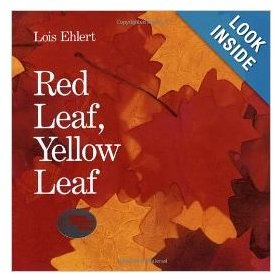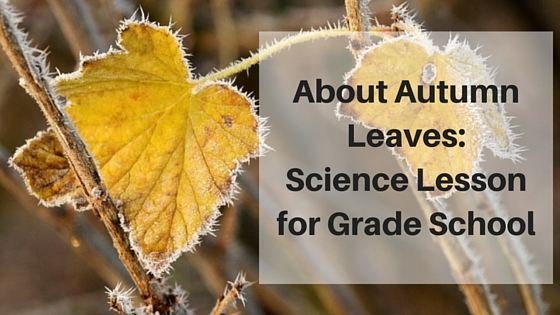Color Me Curious: Science Lesson on Autumn Leaves For Grade School Students
The Last Vibrant Pageantry
Fall is nature’s last explosion of color before the muted tones of winter take hold. But why is this? What happens to the leaves to cause such a display?
The following science lesson on autumn for elementary level students is designed to introduce the biological processes involved in turning a leaf from green to another color, and why some trees lose their leaves while others do not. It’s an optimal time to trigger a student’s interest in the natural world, especially the one that’s closest to home. They will learn to hone their observation skills and perfect note-taking as well.
You may even help to ignite an interest in their environment and their community in general. It’s all about how you shape your approach. The right mix of play, facts, and creativity, can reap big rewards for your class.
Objectives
Students will be able to:
- Differentiate between deciduous trees and evergreens.
- Define new vocabulary related to trees and plants.
- Explain the basic processes involved in changing a leaf’s colors.
- Draw and compare plant cells of summer and autumn leaves.
- Identify local trees as deciduous or coniferous.
- Introduce scientific nomenclature with a bonus Internet scavenger hunt.
Opening Discussion
To begin the lesson, read through the book, <em>Fall Foliage</em> by Charles Smith as a class. Have students bring in a variety of leaves, or pictures of leaves and trees. Have some of your own examples as well, but be sure to include coniferous branches and pine cones. Pass the evergreen samples around the class so the students can actually feel and see firsthand the difference between the two groups.
If you don’t have a microscope handy to show the class plant cells, a printout will suffice. Visual ads are often more effective and encourage engagement, especially in science, as opposed to just writing down notes and reading text. It’s usually a good idea to keep some props handy for future reference. Just drilling facts and vocabulary won’t get you very far. Stimulate the class with whatever tools are available to you, and you’ll see more promising results. Ask the class if they’ve noticed any particular trees in their neighborhood that have begun to change.
Build on prior student knowledge on the phases of a tree’s life cycle, and how it relates to the seasons. Some students may already know about photosynthesis. Expand on that, and discuss the different elements involved, and how the rate of photosynthesis and amount of chlorophyll affect the leaves.
Explain how chlorophyll is not only important to food production, but its green color hides all the other pigments in the leaf. If you already have some leaf samples where the leaves have begun to turn different colors, show the class what happens as the chlorophyll disappears from the leaf. You can even play a matching game with different colored leaves and identify the pigment hidden behind the chlorophyll.
You may also want to engage them in a little art project. Drawing or coloring is another fun way to help them identify various cell parts of leaves. Draw two sets of plant cells, one for a summer leaf, and one for an autumn leaf. Have them label the parts of the cells, and the differences between them. You might also want to include a drawing exercise in an assessment quiz or worksheet.
Vocabulary
Introducing the class to new vocabulary can be much smoother if you employ a few techniques and creative interaction. Have the

entire class participate in reading their textbooks or other reading materials such as <em>Red Leaf, Yellow Leaf</em> by Lois Ehlert, allowing each student to read at least one paragraph each. Each time you come across a new vocabulary word, pause the reading, and write out the word on the chalkboard.
Students are to follow your example and take proper notes. Pronounce the word clearly, clapping it out as you break it into syllables, and have the class do the same. Have the definition read out loud, and also written in the students’ notes. The combination of saying the word out loud to the rhythm of clapping, and writing it down helps the class get acquainted with the vocabulary, and retain the information. Plus, adding a musical element whenever possible is always fun.
-
Photosynthesis: The way that plants use sunlight and chlorophyll to make their own food.
-
Chlorophyll: The substance that gives leaves their green color. It is used to help produce food for the plant.
-
Deciduous: Type of trees or shrubs whose leaves fall off depending on the season.
-
Coniferous: Type of trees of shrubs whose leaves remain green even in winter, and produce pine cones. Also called evergreens.
-
Carbohydrates: Any of a group of organic compounds such as sugars, starches, or cellulose that are formed of carbon, hydrogen, and oxygen and that provide the energy for plants to function.
-
Abscission Layer: A group of thinly connected cells near the bottom of a leaf stalk or branch that builds up causing the leaf to break away from the branch.
-
Chloroplast: A small green sack within the plant cell that contains the chlorophyll. It’s where photosynthesis takes place.
-
Xanthophylls: Yellow coloring that works with chlorophyll to capture light.
-
Carotenoids: Orange pigment inside leaves that helps the chlorophyll capture light.
-
Carotene: The most common type of carotenoid pigment.
-
Pigment: Anything that’s used to create or act as coloring.
-
Anthocyanins: A range of pigments from red to blue. Tends to cause leaves to change red or even purple seasonally. They are mostly produced from leftover sugars in the fall, and not during spring and summer.
-
Tannins: the brown pigment remaining in leaves after all the chlorophyll and other pigments have faded away.
A Word Search Is Always a Winner
A word search is a fun way to fortify learning the vocabulary. You can also do a word scramble or play a game of Hangman and divide the class into teams. Make it fun and interactive, and the students will retain the knowledge much easier. An example of a word search is provided here, but you can also create your own. There are many free templates and websites where you can create fun and informative word games, tailored to a specific subject.
See: The Science of Autumn for word search.
Incorporating Crafts and Creative Projects
Crafts are an entertaining way to further instill science lessons. Here are some ideas to add to yours:
-
Are there any trees on school property, close to home, or perhaps a park that’s nearby? Have students or the class as a whole “adopt” a tree. Sharpen their observation skills by having them chronicle the life changes of a tree until the very last leaf has fallen. Have them note if the leaves turned prematurely. Your class can build their own tree collage. They can either present their findings artfully displayed over a cereal box, using construction paper, photographs or leaf samples, and paste brief paragraphs on their findings.
-
They can construct a tree of their own, using paper cutouts or plant/tree clippings. Their tree must be either a deciduous or evergreen. Have the children come up with their own names for their trees. They must show things like where it grows, what is it deciduous or an evergreen, what color does its leaves turn into, etc. They must use what they’ve learned about the life cycle of a tree for this project. Their tree is make-believe, but they are attributing real biological processes to it. Let them use their imaginations and harness their creativity. You could then hang their projects on a bulletin board entitled, “Our Make-Beleaf Trees.”
-
Students could make a cartoon flip book, illustrating how the leaves change colors.
An Extension Activity
An Internet scavenger hunt is a great tool for introducing scientific nomenclature to the class. Give them the scientific name of a tree–for example, Metasequoia glyptostroboides (Dawn redwood). Give them only the scientific name, and have students search the Internet for its common identity. Have them write brief paragraphs describing where the tree grows, its physical characteristics, etc. You could then put their paragraph descriptions on a bulletin board labeled, “Let’s Talk Trees.”
Assessment
Use the following worksheet to gauge how well your students have absorbed the information from these leafy science lessons. This will also get them thinking more about causality and deductive reasoning.
Directions: Fill in the blanks using vocabulary from the word bank below. Note that there is an extra word, so there are only ten correct answers.
Word Bank:
- abscission layer
- chlorophyll
- carbohydrates
- tannins
- photosynthesis
- deciduous
- pigment
- coniferous
- chloroplasts
- xanthophylls
- anthocyanins
- A maple tree is a type of _______________________________ plant.
- ___________________________ is the process plants use to produce their own food.
- Carotene is the most common carotenoid ______________________ .
- Leaves get their green color from _____________________________.
- _______________________ are usually not present in leaves until autumn.
- Sugars belong to a group of _______________________________.
- As the _________________________________ builds up and dries, it blocks nutrients and other materials from reaching the leaf.
- ______________________ are the only colors left once the leaf has fallen from the tree and dried up.
- A spruce tree is an example of a __________________________ plant.
- A plant produces food from light energy inside _____________________________.
References
- USNA/USDA
- This lesson plan was partially based on a weekend science project with my niece.
- Why Do Leaves Change Color? From the State of Wisconsin Department of Natural Resources website.
